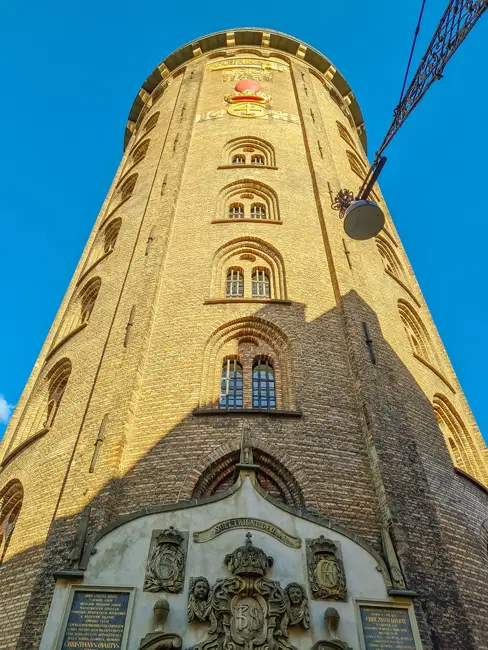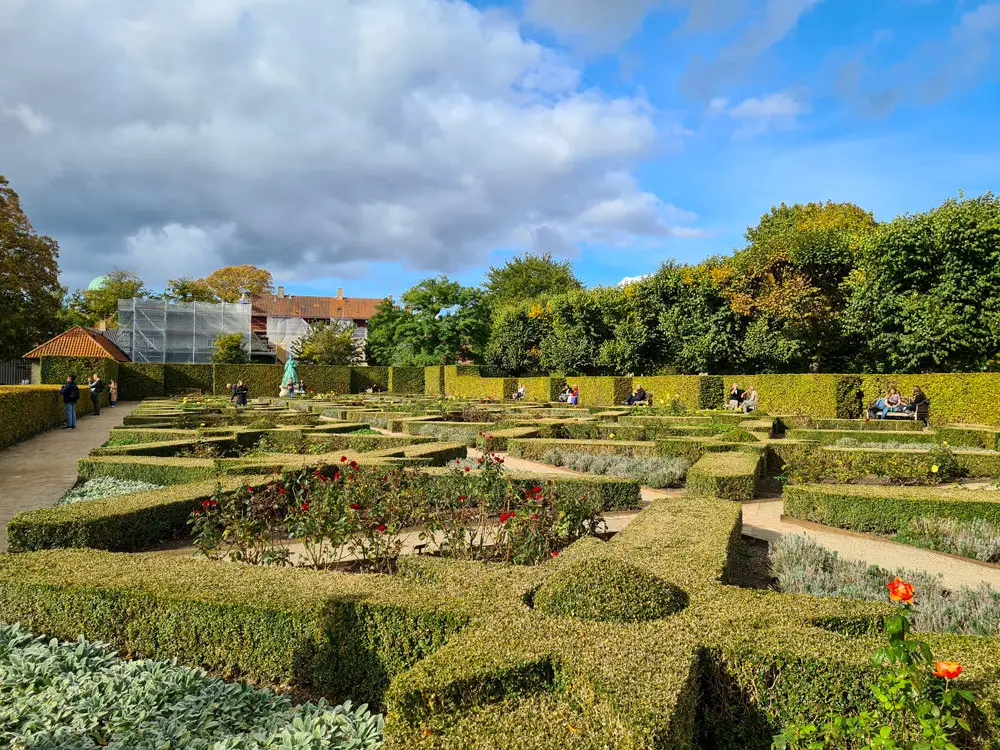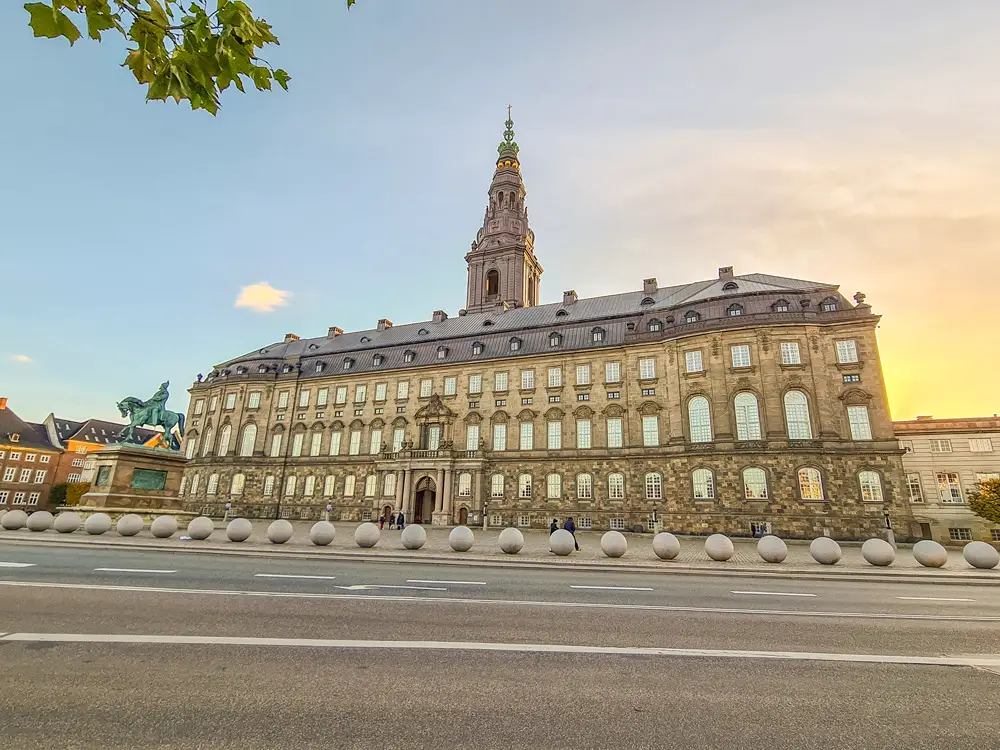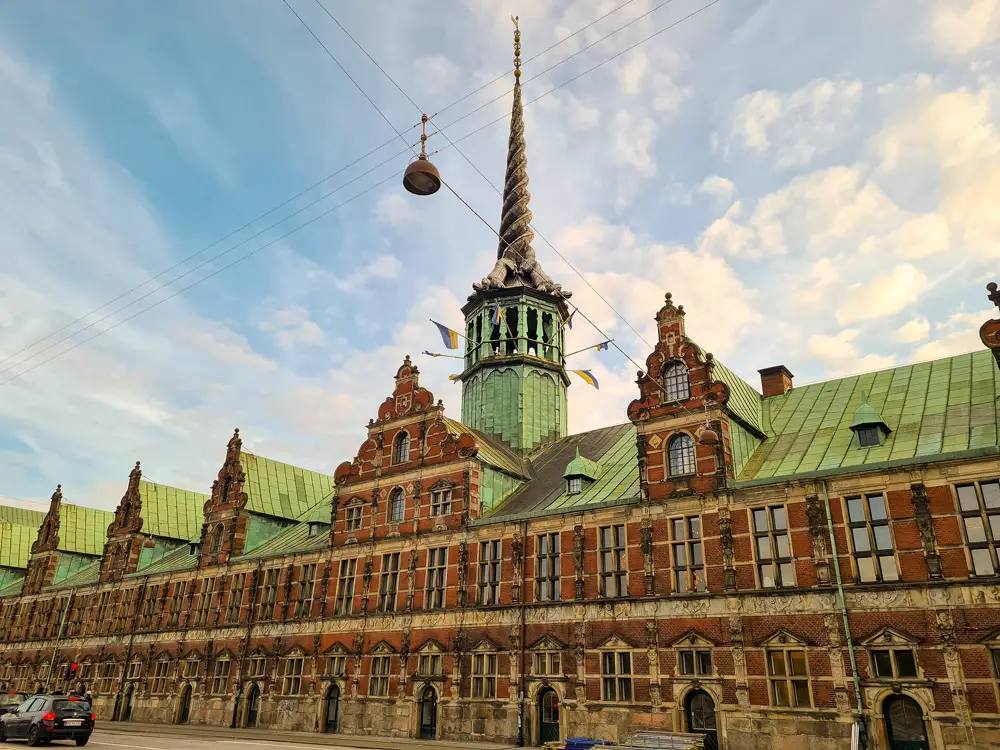Last Updated on 13.07.2023 by Iliyan
Thinking about spending 3 days in Copenhagen? Great! The colorful Copenhagen is known as being the happiest city in the world for years. The capital of Denmark is the perfect destination if you’re looking for a rich history, incredible museums, castles, beautiful architecture, unique canals, parks, and cycling culture – around fifty percent of people ride a bike to their work or study places each day.
I had 3 days to explore Copenhagen, and in this article, I’m going to take you along with me on a walk across the top attractions in Copenhagen that you must visit.
Contents
How to Get from the Copenhagen Airport to city center?
Going from Copenhagen Airport to city center is pretty easy. The airport is located at Kastrup, on the island of Amager, just 10 km south of downtown Copenhagen. There are 3 terminals, and they are all linked together. There is a bus linking the train station with Terminals 1, 2 and 3 and it is free. It runs every 10–20 minutes.
Train
Trains connect Copenhagen Airport with Copenhagen Central Station (Københavns Hovedbanegård) or Nørreport, both centrally located. It takes less than 15 minutes and the trains run roughly every 10 minutes into Central Station. All trains stopping at Terminal 3 at Copenhagen Airport go to Copenhagen central station. A one-way ticket costs 36 DKK (4.84 €).
Find more info on train routes and timetables at DSB Train | Discover Denmark by train
Metro
The metro is the easiest and fastest way to travel from Copenhagen Airport to downtown. It takes 15 minutes to get into the center. The central stops in the city are Nørreport, Kongens Nytorv and Christianshavn. The metro runs 24 hours per day – every 5 minutes during the day and every 15–20 minutes at night.
You can buy your tickets from the DSB ticket machines in Terminal 3 or from the metro station. A one-way ticket costs 36 DKK (4.84 €).
Bus
There are also buses that will take you into Copenhagen center, but they are the slowest transfer option. The buses run every 10-20 minutes. The trip takes around 35 minutes to reach Copenhagen Central Station in normal traffic. The bus stop is just outside of Terminal 3. Bus 5c goes to the central station.
Taxi
Taking a taxi is one of the most convenient transfer options from the airport to the city center. Taxis are popular for places not close to the metro and train stations. They are by meter but expect to pay around 300-350 DKK and take around 20 minutes to reach the city center.
3 Days in Copenhagen Itinerary: Day 1
I think that 3 days in Copenhagen is the perfect amount of time to spend in Denmark’s capital. Most of the places we wanted to visit were accessible by foot. We had 3 days in Copenhagen and 1 day in Malmö, Sweden. However, If you have 3 days in Copenhagen I highly recommend using Copenhagen cart. The Copenhagen card offers free admission to 89 attractions in and around Copenhagen. In addition to that, the card provides unlimited free public transport by bus, train, and metro. More information and prices you will find on the Copenhagen Card’s website.
Tivoli Gardens
Tivoli Gardens is one of the most popular attractions to visit in Copenhagen, located right in the center of city. It opened in 1843 and it is the third-oldest operating amusement park in the world, after Bakken (Dyrehavsbakken), also in Denmark, and Wurstelprater (Prater) in Vienna, Austria. A fascinating place for tourists and locals, both young and young at heart. During our trip to Copenhagen, the park was closed, but you should visit it if you have more time.

Copenhagen City Hall (Københavns Rådhus)
You can’t come to Copenhagen and not visit the City Hall. This iconic building is situated on City Hall Square in central Copenhagen. It was inaugurated in 1905, designed by the architect Martin Nyrop with inspiration from Siena City Hall in Italy. Anyone can enter and walk around, but there are tours (City Hall Tour & City Hall Tower Tour) for a nominal fee. The price is 40 DKK (≈ 5.40 €). Opening hours: Monday – Friday 11 am and 2 pm / Saturday at 12 noon.

*Don’t miss the Jens Olsen’s World Clock, which is displayed in Copenhagen City Hall. It is in a room just inside the entrance way. This is the most precise mechanical clock in the world. Оne of the cogs within it only complete one rotation every 25,753 years.

Strøget
Strøget is a long and very crowded street, one of the longest pedestrian shopping streets in Europe. The 1.1 km street runs from City Hall Square (Rådhuspladsen) to Kongens Nytorv (The King’s New Square). You’ll find plenty of famous international brands, as well as local Danish stores, supermarkets, souvenir shops, restaurant and bars.

The Round Tower (Rundetårn)
The Round Tower is another popular attraction, located in the heart of Copenhagen’s old town area. It was built in XVII century by Christian IV of Denmark as an astronomical observatory. These days the tower houses exhibitions, concerts, and activities for young and old.
Getting to the top is easy by a ramp that spirals up. There is a 360-degree view over the city, but as the tower is only 34.8 meters tall you won’t get great views of the city of Copenhagen. Admission fee: Adults – 40 DKK (≈ 5.40 €); Children (5-15) – 10 DKK (≈ 1.35 €).

*King Christian IV’s rebus is on the façade above the entrance. You can see the following text ”Doctrinam et justitiam dirige, Jehova, in Corde coronati regis Christiani Quarti”, which has been translated into, “Lead, God, learning and justice into the heart of the crowned King Christian IV”.
Nyhavn
Nyhavn is the most popular place in Copenhagen. It is one of the most photographed spots in the city and it is no wonder: the colorful buildings, water canals and little narrow cobblestone streets, is what gives Copenhagen its fairytale feeling. Initially a busy commercial port where ships from all over the world moored. Once filled with alehouses, pubs, sailors, and ladies of pleasure, but now these colorful old houses have been renovated and classy restaurants dominate the old port.

Attending a FC Copenhagen Match at Parken Stadium
If you are a football fan you should not miss visiting the Parken Stadium in Copenhagen. FC Copenhagen is the most popular club in Denmark, and at their home matches the atmosphere is great. As well as being home ground of FC Copenhagen, Parken is also used by the Denmark national football team. It also hosts a number of important events and concerts.

3 Days in Copenhagen Itinerary: Day 2
Church of Our Saviour (Vor Frelsers Kirke)
This is a really interesting church to visit, located in Christianshavn. It is very popular baroque building, most famous for the external spiral winding staircase that can be climbed to the top, offering great views over central Copenhagen. There’s about 400 steps to get to the top. Half of them inside then you move outside.

The highest you can climb is almost 90 m above street level. Definitely the perfect view spot to see all of the important sites in Copenhagen. The entrance to the church is free of charge, but if you wanna climb the tower you have to pay. Admission fee: Adults – 65 DKK (≈ 8.75 €); Students and 65+ – 50 DKK (≈ 6.74 €); Children (5-14) – 20 DKK (≈ 2.70 €).


Christiania
Freetown Christiania, also known as Christiania, is without a doubt one of Denmark’s most popular tourist attractions. It is a former military base that sat abandoned for many years before becoming the neighborhood it is today. It was founded in 1971, when a group of people cut a hole in the fence to the military barracks and began squatting there.

Nowadays, approximately 900 people live in the commune, that has its own rules and regulations completely independent of the Danish government. The Green Light District, also known as Pusher Street, is the famous street in Freetown Christiania. Here you’ll see numerous stalls loaded with all different kinds of cannabis and other drugs.

The Little Mermaid (Den Lille Havfrue)
The statue of Little Mermaid is arguably one of Copenhagen’s most visited tourist attractions in Denmark. The sculptor Edvard Eriksen created the mermaid in 1913 inspired by Hans Christian Andersen’s famous fairy tale. The statue is located in Lanegline, surrounded by a lovely area and nice parks. You will be surprised how small it actually is. I highly recommend getting there early morning, because it is too much overloaded with tourists.

Kastellet
Kastellet is a citadel located close to the Little Mermaid. It is one of the most impressive and well-preserved fortresses in Northern Europe. It is constructed in the form of a pentagon with ramparts and bastions, surrounded by a moat. A number of buildings are located within the grounds of Kastellet, including the Citadel Church, windmill and old military barracks. There are lots of trees and green space with good paths for walking and exploring.

Frederik’s Church (Frederiks Kirke)
Frederik’s Church is one of the most famous landmarks in Copenhagen. It is easily recognizable by its impressive green dome. Some people say it was inspired by St. Peter’s Basilica in Rome. The church is located across the road from the Amalienborg Palace where you can watch the changing of the guard every day at 12 noon.

Rosenborg Castle and The Kings Gardens (Rosenborg Slot)
Rosenborg Castle is one of Denmark’s top attractions. It was built by one of the most famous Danish kings, Christian IV, in the XVII century. The castle is open to the public for tours and houses many of the royalty’s artifacts and treasures, including the crowns of the kings and queens of the Danish royalty. Admission fee: 125 DKK (≈ 16.85 €).

The King’s Garden (Kongens Have), also known as Rosenborg Garden, which surrounds the castle, is the oldest and most visited park in central Copenhagen. The Renaissance style garden was established by King Christian IV in the early XVII century as the private gardens. Nowadays you can stroll around for free or have a picnic in the summer.

National Gallery of Denmark (Statens Museum for Kunst, “SMK”)
The National Gallery of Denmark is one of the absolute best Copenhagen attractions. It is located in the center of Copenhagen, near the Botanic Garden. The museum has a wide selection of Danish and international art, where you can enjoy a tour of 700 years of art history. The museum offers the most superb collection of Danish Golden Age art. In addition to that, the museum has one of the world’s best Matisse collections.



The SMK is a place, where you can easily spend half a day there. Admission fee: 120 DKK (≈ 16.13 €).
3 Days in Copenhagen Itinerary: Day 3
Ny Carlsberg Glyptotek
The Ny Carlsberg Glyptotek is an art museum, founded in 1888 by brewer Carl Jacobsen, the son of the founder of the Carlsberg Breweries. It was built around the personal collection of Carl Jacobsen. Glyptoteket has been open to the public since 1897 and comprises over 10,000 works of art. One of the most famous paintings in the Ny Carlsberg Glyptotek is that of Mother Denmark by Elisabeth Jerichau Baumann.

The gallery is famous for its incredible collection of marble sculptures and its winter garden.

Would recommend visiting the museum on Tuesday as it is free to visit. Otherwise, the price is 125 DKK (≈ 16.86 €).
Christiansborg Palace (Christiansborg Slot)
Located on the islet of Slotsholmen, Christiansborg Palace now houses the Danish Parliament, the Supreme Court, and the Ministry of State. Therefore, the palace is home to the three supreme powers: the executive, legislative, and judicial powers.
The palace has more than 800 years history as Denmark’s center of power, as the first castle on the site was Absalon’s Castle, built in 1167.
The main palace at Christiansborg is open for the public. The combined ticket 160 DKK (≈ 21,51 €) gives you access to everything the palace: The Ruins, The Royal Reception Rooms with The Great Hall and The Tapestries, The Royal Stables, and The Royal Kitchen.

- Christiansborg Palace Tower
Don’t forget to visit the tower of the Palace – with a height of 106 meters, the tower on Christiansborg Palace is the highest in Copenhagen. It is free to access the tower! Opening hours: Monday – Closed; Tuesday – Saturday – 11.00-21.00; Sunday – 11.00 – 17.30

Børsen
Børsen is one of the oldest buildings in Copenhagen. It is former stock exchange, built under the reign of Christian IV in 1625. This The historic building is located next to Christiansborg Palace.

Botanical Garden (Botanisk Have)
The Botanical Garden is located in the center of Copenhagen, just a short walk from Torvehallerne Market. It covers an area of 10 hectares, and it is open for the public unless you want to go inside the conservatory. However, if you want to go inside it will cost 60 DKK (≈€8.07)/ adult and 40 DKK (≈ €5.38)/ child.

The Botanical Garden is a beautiful place to sit and relax. It contains more than 13,000 species with several different styles of garden landscaping. The highlight was undoubtedly the Palm House. We walked around the Butterfly House first and then on into the Palm House. The collections are fascinating and the plants interesting.

Torvehallerne Market
If you are looking for Danish delicious treats, vegetables, sandwiches, fresh fish or soups, and more, then this is a perfect place. There are actually two halls, connected by an outside area, including fruit and flower stalls. It is located close to the busy Nørreport Street, and offers in excess of 80 stalls. There’s a really lovely atmosphere making it a cool place to be wandering around. The market has many options so you can try different type of foods and alcoholic beverages. We opted for smorrebrods (smørrebrød) and frikadeller, and they were incredible. It’s not open late so don’t go in the evening.




